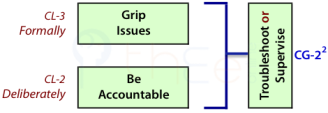Why Troubleshooting is so Hard
are often sent in from a higher level, or even HQ, when persistent problems start becoming unendurable or embarrassing. However, any manager can (in principle) troubleshoot—so why don't they?

Resolving any persistent issue requires appropriate . Just think about it: if the matter were simple and its nature self-evident, it would have been solved long ago.
So must inquire i.e. determine the nature of the issue, discover its ramifications, investigate implications of possible solutions, appreciate diverse views. In doing that, it rapidly becomes evident that the issue is actually a system of inter-connected problems—technically, «a mess».
There is only one that suits complex systems: which is based on .
The typology of is a THEE framework posted here. Relevant academic publications can be downloaded, however subsequent studies found errors in these. The 7 paradigms and the underpinning research principles according to latest analyses are shown ![]() here ►
here ►
Rather few people anywhere are natural , and even fewer of these are employed as line-managers in conventional organizations. They tend to gravitate to HQ.
So we should not be surprised that idiosyncratic issues crossing many boundaries often resist intervention. They simply fester. Eventually they may disappear as a by-product of other organizational changes, or when force majeure is applied (e.g. disposal or closure of the business unit).
![]() Supervision is simple and gets simplified.
Supervision is simple and gets simplified.
Originally posted: 20-Oct-2011; last updated: 16-Jun-2023.
